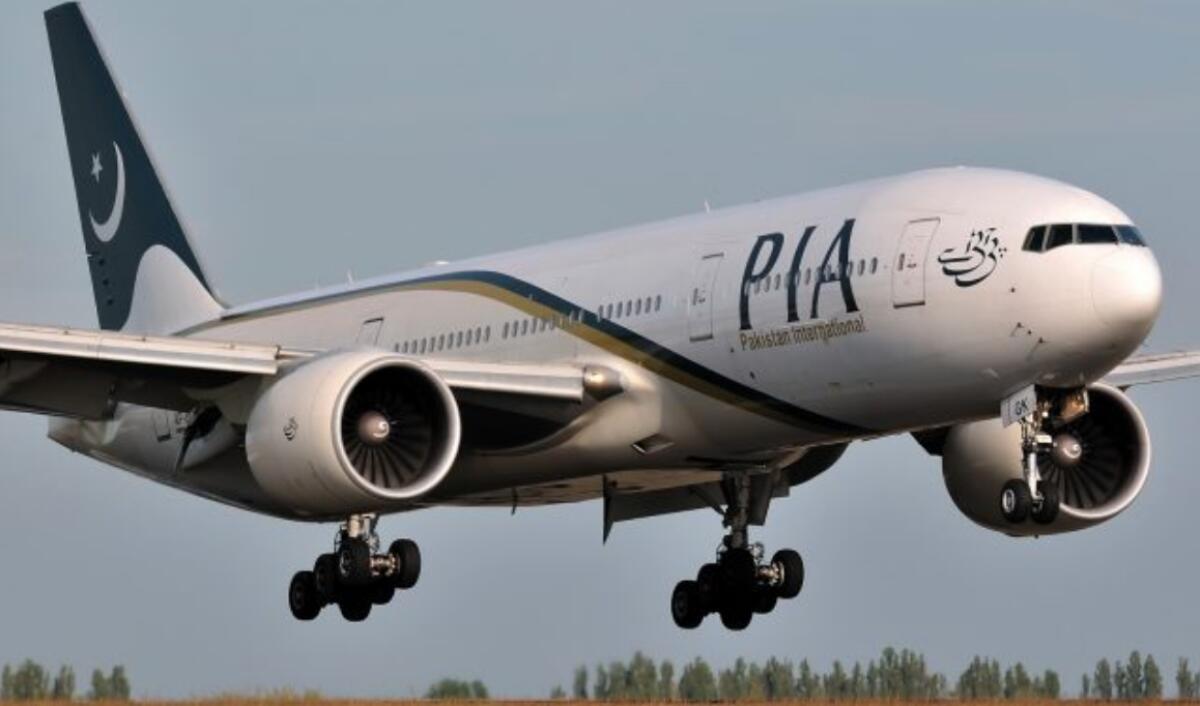
By Ghulam Haider
Airlines operating from Pakistan to the Middle Eastern countries are reaping huge profits two years after the COVID pandemic-induced lull, with aviation industry experts citing inflationary pressures in raw material costs, capacity constraints, labour & aircraft shortage, strong US dollar, and rising fuel prices as the major drivers of this ever-increasing airfare hike.
On an annual basis, airfare inflation has increased by a massive 42.9%, the highest on record and more than five times higher than the overall inflation rate of 8.2%. Last month’s Consumer Price Index (CPI) report showed airfares rising 33% annually.
Despite global flight capacity increasing over the past 12 months, addressing some of the constraints pushing fares up, airfares will continue to increase as long as demand remains high. The airfares have been increased by almost all airlines, including budget airlines, unilaterally. The labour class, in particular, has been badly hit by the hike.
Those in the aviation sector say that airfares to all the destinations worldwide – not just from Pakistan– from the Gulf countries have increased manifold. Tickets are not available in some sectors even if the passenger is willing to shell out any amount of the money.
This tax increase to some extent is part of the Finance (Supplementary) Bill 2023 and is designed to generate additional tax revenue of Rs170 billion to unlock $1.1 billion from the International Monetary Fund. The FED will charge a fixed amount ranging from Rs. 75,000 to Rs. 250,000 for different tiers of first and business class tickets, as per the International Air Transport Association (IATA).
“The demand for more flights during the season is the years old, and nothing has materialised. The current situation warrants more flights to the Gulf nations, but no efforts have been made to increase the schedules. Increasing the number of flights will bring relief to the hundreds of expats in the Middle East,”
Worry for Pakistani Diaspora

According to the Pakistan International Airlines (PIA) administration officials, the prices of two-way tickets for flights from Lahore to Dubai, Sharjah, Karachi, Toronto, Dammam and Saudi Arabia have been increased.
The two-way ticket of Dubai Economy Class from Lahore clocked in at Rs. 190,000 after the increase. The PIA’s two-way Economy Class ticket price from Lahore to Sharjah has gone up to Rs113,927 while that of Executive Economy Class has increased to Rs135,000.
The PIA’s airline ticket from Lahore to Toronto is being charged at Rs. 458,716. Similarly, the fare of Toronto Executive Economy Class from Lahore has been increased to Rs. 667,000. The PIA’s Economy Class fare from Lahore to Dammam has reached Rs. 135,222.
Similarly, the PIA’s two-way fare from Lahore to Karachi reached Rs. 64,150 and that of Karachi Executive Economy Class from Lahore rose to Rs. 85,930.
The one-way ticket price of flights from Lahore to Karachi and from Karachi to Islamabad is being charged from Rs. 28,000 to Rs. 30,000. The PIA’s Economy Class airline ticket between Karachi and Islamabad has gone up to Rs. 46,600 and Karachi-to-Islamabad Executive Economy Class fare has gone up to Rs. 76,000.
Another reason for the increased airfare is the IATA-recognised travel agencies purchasing “Group Tickets”. Agencies book tickets in bulk, often all seats, aiming to cash in on the high demand for tickets for particular routes and destinations. The purchase of “Group Tickets” shoots up the price of tickets available online.
The agencies later sell the tickets on huge profit margins. For instance, if the airfare from Lahore to Dubai is Rs. 80,000 for July 4, the Group Ticket for some agencies will be available for Rs. 38000 for now, and these travel agencies will sell these tickets on huge profit margins at that time.
The ultimate sufferers are the passengers, particularly Pakistani migrant workers in the Gulf states, who are literally unhappy since the airfares have sky-rocketed. The ticket from Lahore to Dubai that cost less than Rs. 70,000 till around two, three weeks back have now crossed over Rs. 120,000 to Rs. 135,000. Similarly, the Lahore-Milan ticket was available for Rs. 110000 two weeks ago, but now its prices have shot up to Rs. 290,000 or above.
The Lahore-Spain ticket that was available for Rs. 145,000 in the second week of February, is not available for less than Rs. 350,000 to Rs. 400,000, Lahore-Jeddah & Riyadh ticket cost Rs. 55,000 to Rs. 65,000, which now was available for Rs. 125,000 or above.
Air travel demand swells in Asia
Asia, which was slower to lift COVID travel curbs, has witnessed some of the biggest changes as demand swells, Amex GBT said in its Air Monitor 2023, forecasting 25 per cent hike in airfares on key corporate travel routes in the current year.
Higher fares between Europe and Asia also reflect the impact of rerouting to avoid Russian airspace, which is off-limits to many airlines following the invasion of Ukraine. The detour adds as much as three hours to journeys, pushing up fuel consumption and costs.
Compared with 2019, economy-class airfares from Asia to North America will be almost 23% higher and business will be about 15% more expensive in coming days.
“Travel is rebounding in Asia Pacific and expected to grow as countries continue to reopen, but the current global economic headwinds show continued turbulence lies ahead,” says Jehangir Ashraf, Director, Rizviya Air Travels & Tours, Pakistan, adding that people’s tolerance would be tested, but it won’t alter the fundamental need for travel.
:max_bytes(150000):strip_icc():format(webp)/woman-walking-in-airport-FLIGHTPRICE0522-5b59a2daa1ee41bdb0a2f93a6bfbee90.jpg)
One of the biggest changes are being witnessed for business-class tickets within Australia, which are forecast to rise about 19%. While demand is back around pre-COVID levels, airlines have cut capacity to deal with issues such as staff shortages and high fuel costs, causing ticket prices to climb.
With Europe also seeing a shortfall of airline capacity versus demand, intraregional airfares are expected to climb 6% in business and 5.5% in economy, Amex GBT said. The increase won’t be as sharp within North America, where fares are set to rise about 3% in both cabin classes. North America-Europe fares will be 3.7% higher than 2022.
Global airline capacity expected to recover to 92%
Amex GBT said global airline capacity in 2023 was expected to recover to 92% of 2019 levels. However, the biggest gains are expected in economy class on routes between Australia and Asia, in business class on Australian domestic flights and those to New Zealand, as well as in economy class on Asia-Europe flights.
On a Tokyo-London flight, the change in route can add nearly 2.5 hours of flying time and a 20% increase in fuel burned, Amex GBT said, contributing to a forecast 14.5% rise in Asia-Europe economy class fares in 2023.
In Australia, the country’s competition regulator said on Tuesday that average domestic airline revenues per passenger were 27% higher in October than in the same month of 2019 because of capacity constraints, high oil prices and operational challenges.









 United Arab Emirates Dirham Exchange Rate
United Arab Emirates Dirham Exchange Rate

